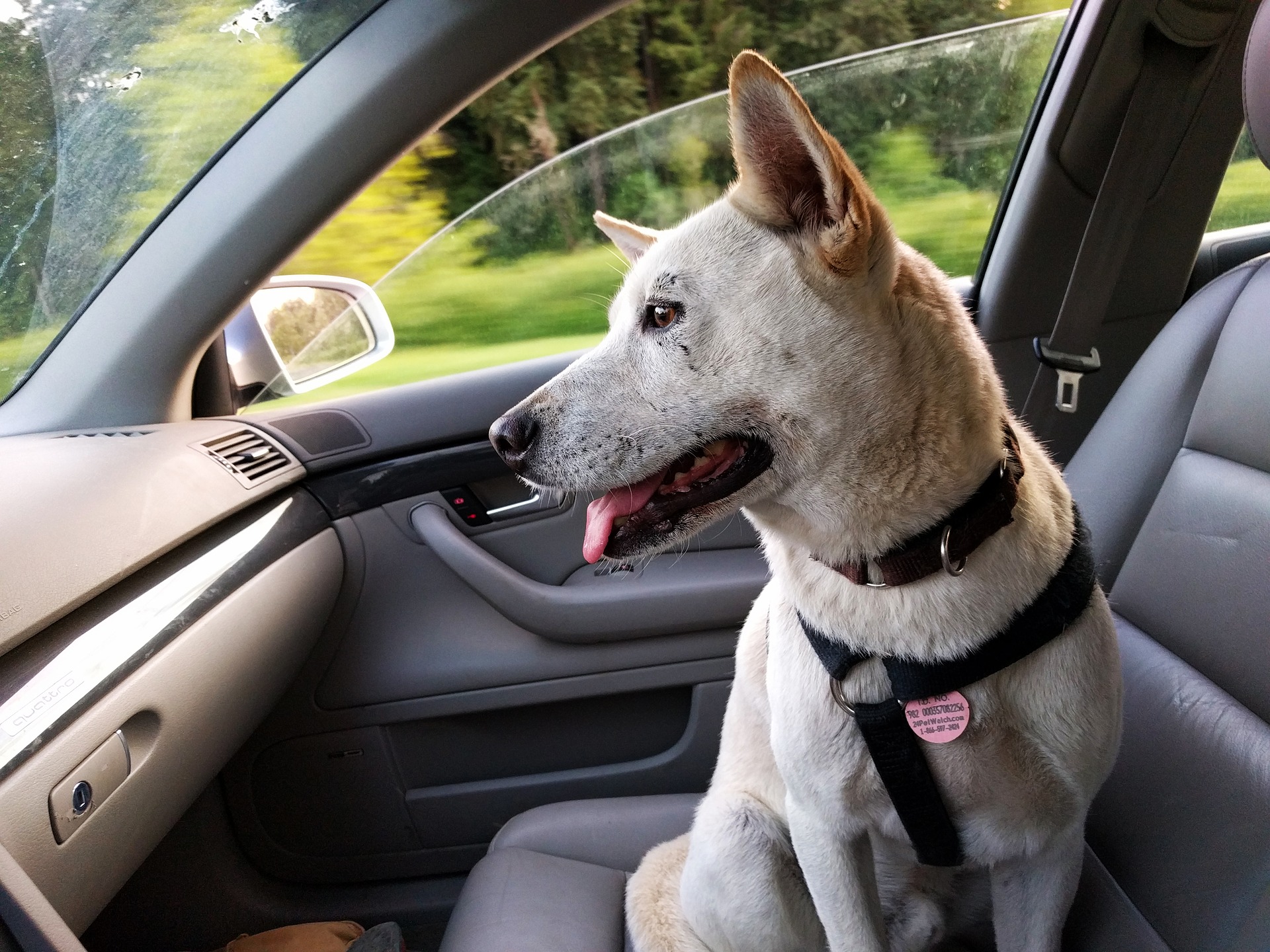With the summer upon us and COVID restrictions loosened, most people are eager to take a trip. Bringing your dog along with you is a great way to save on care costs and provides them the opportunity to have fun new experiences. However, this can be difficult if your dog is not a fan of car rides. Fear of the car usually stems from one of two core issues–anxiety about the experience or feeling physically uncomfortable.
Anxiety During Car Rides
Cars are big and noisy, and riding in them can be unnerving. If your dog is panting excessively, trembling, pacing, or whining when you put them in the car, they likely have developed anxiety around being there. The longer you allow this fearful behavior to continue, the more deep-seated the anxiety will become. Instead, take baby steps to get them acquainted with the vehicle before your big trip.
Proper desensitization is crucial to helping a dog feel comfortable in a car. You need to help them form positive associations with the vehicle so that they’re excited and willing to get in it. To begin, encourage them to investigate the car themselves by scattering treats throughout it. Leave the car parked, turned off, with all the doors open in your driveway. Show your dog the treats, and let them watch you scatter them. On the first day, they may only want to get within a few feet of the car. As soon as they look uncomfortable or want to turn back, end the session for the day. Gradually, they’ll get to the point where they happily hop into the car. After they do this, work on shutting all the doors, then moving on turning the engine on. Keep the treats flowing, as they will be a source of comfort and calm during these sessions.
Once your pup is happy even with the engine on, start trying to move and begin car rides. Give your dog a treat that will occupy their attention for a longer period of time, like a Kong with frozen peanut butter or bully stick. Start just by backing up, then driving back forward in the driveway, then advance to driving slowly around the block. Over time you’ll gradually increase your speed and duration.
Car Sickness or Instability
If your dog gets carsick, it’s no fun for anyone. You can try to decrease their nausea in a few different ways:
• Make sure they can see out the window. Motion sickness occurs when our body feels we’re moving, but our eyes only see the unmoving car interior. Being able to look out the window lowers the brain’s confusion and, consequently, nausea. Most car seats can bring a dog up to window height, or the dog can sit on a passenger’s lap.
• Get the air moving. Just like when a person gets sick, a lowered window will likely help settle your dog’s stomach. Be cautious with how low you set the window level, though. It is dangerous for a dog to stick their head out or be untethered around an open window.
• Try ginger. Ginger has anti-nausea properties, so it’s a great solution for anyone suffering from car sickness. Give your pup a piece of a pup-safe ginger biscuit before the car ride to help prevent nausea.
• Anti-nausea meds. Your vet can prescribe some medications to keep your dog’s motion sickness at bay if no other methods have worked.
It may take a little trial and error, but your hard work will pay off when your dog loves to join you on car rides.
Gulf Coast K9 Dog Training is a Bradenton-based dog training and obedience school.





